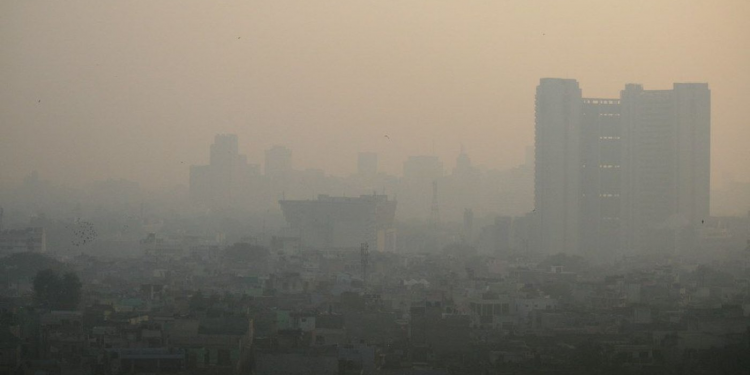Dhaka’s air quality was recorded as ‘unhealthy for sensitive groups’ with an AQI score of 119 on November 6, 2024. This score, which reflects the concentration of harmful particles in the air, highlights the persistent pollution issues that plague Bangladesh’s capital. As the city enters the dry season, AQI levels often rise due to various contributing factors, including vehicle emissions and industrial pollutants. Sensitive individuals, such as children, the elderly, and those with respiratory conditions, are advised to limit outdoor activities to reduce health risks associated with polluted air.
According to the Air Quality Index (AQI) system, pollution levels range from ‘moderate’ (AQI 50–100) to ‘unhealthy for sensitive groups’ (101–150) and become hazardous as values exceed 301. Even the current AQI level poses health concerns for Dhaka’s residents, especially during prolonged exposure. Meanwhile, other cities in South Asia, such as Lahore and Delhi, have recently reported even higher AQI scores, marking them as some of the most polluted cities globally. On November 6, Lahore recorded a shocking AQI score of 1,099, with Delhi close behind at 368, while Sarajevo ranked third at 169.
Key Contributors to Air Pollution in Dhaka
The air pollution in Dhaka stems from various sources, with vehicle emissions being a significant contributor. A 2021 study conducted by the Chemistry Department of Dhaka University revealed that vehicles powered by fossil fuels account for approximately 50% of the city’s air pollution. The high volume of fossil-fuel-powered vehicles in Dhaka results in an alarming level of particulate matter (PM2.5 and PM10), nitrogen dioxide (NO2), and carbon monoxide (CO) emissions, further exacerbated by industrial activity and construction dust.
As Bangladesh continues to develop, rapid urbanization has intensified air quality challenges. The country lacks sufficient pollution control regulations to address vehicle emissions, making it difficult to mitigate the effects of fossil fuel combustion on air quality. The scarcity of green spaces and limited air circulation in the densely populated city further trap pollutants, aggravating the issue.
Health Implications of Poor Air Quality
Air pollution poses severe health risks, particularly to sensitive groups like children, the elderly, and those with respiratory and cardiovascular conditions. According to the World Health Organization (WHO), air pollution is responsible for an estimated seven million premature deaths annually due to conditions such as stroke, heart disease, chronic obstructive pulmonary disease, lung cancer, and acute respiratory infections. The presence of high levels of particulate matter in Dhaka’s air can trigger asthma, reduce lung function, and increase the risk of respiratory infections.
Seasonal Variations in Dhaka’s Air Quality
The air quality in Dhaka generally deteriorates during the winter months and improves slightly with the onset of the monsoon season. During winter, the dry weather and cooler temperatures cause pollutants to linger closer to the ground, increasing exposure to harmful particles. Monsoon rains help to cleanse the air temporarily, providing some relief to residents. However, the seasonal improvement is insufficient to address the root causes of the city’s air quality issues.
Conclusion
The current AQI rating for Dhaka highlights the urgent need for action to mitigate air pollution in the city. Enhanced regulation of vehicle emissions, transitioning to cleaner energy sources, and investing in public transportation infrastructure could significantly reduce Dhaka’s pollution levels. Public awareness campaigns that encourage citizens to adopt eco-friendly practices, such as using public transport and avoiding open burning, could also play a role in improving air quality. Addressing air pollution is crucial to safeguarding public health in Dhaka, and comprehensive solutions at both local and national levels are essential to creating a cleaner and healthier environment for future generations.




